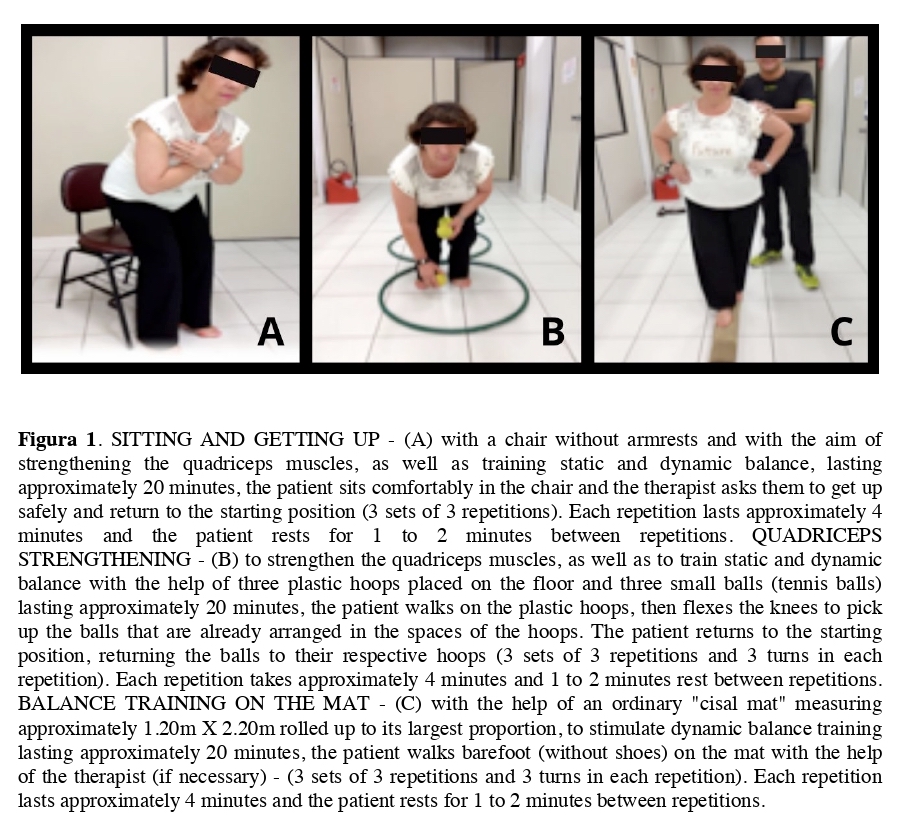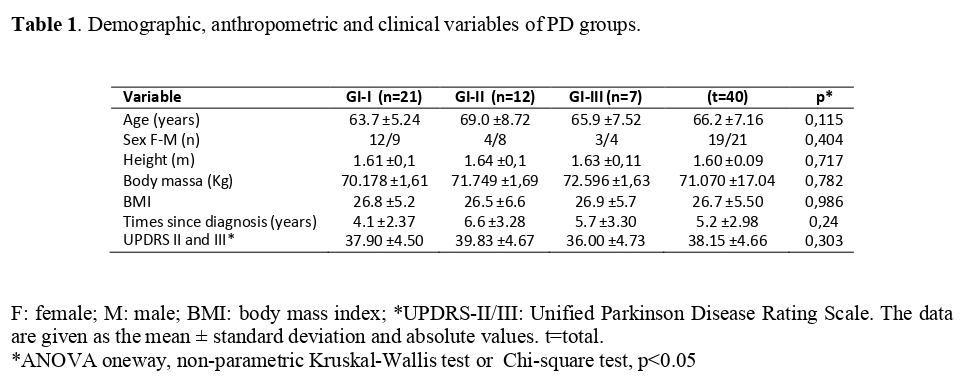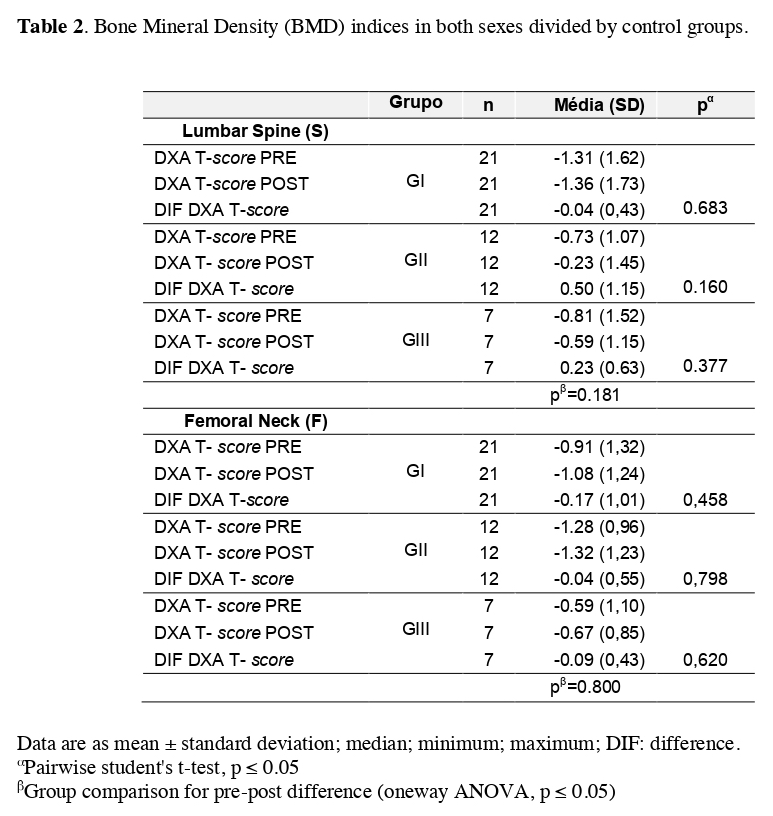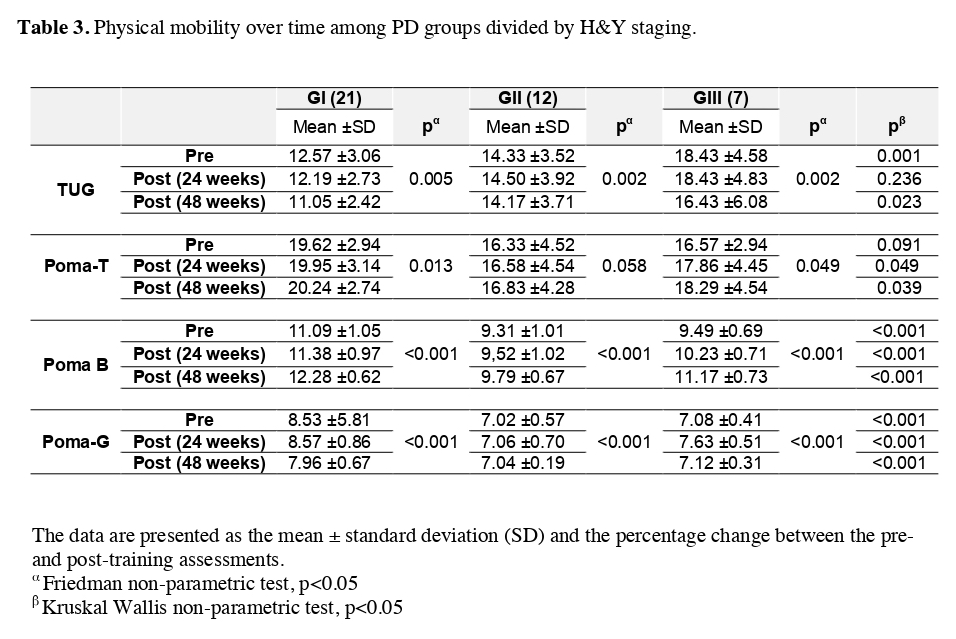Objective: To determine the effects of a long-term exercise program on bone health, balance and gait in older adults with mild to moderate Parkinson’s disease (PD).
Background: Pathophysiological mechanisms of bone loss in Parkinson’s disease (PD) and its relationship with age involve a gradual and progressive functional decline.
Method: Forty participants, divided into three groups by staging (H&Y I-III) were included in this Clinical Trial. Serum calcium, albumin and creatinine levels were measured to determine the association of bone mineral density (BMD) with PD severity and vitamin D concentration to rule out hypovitaminosis at the initial assessment. A multidisciplinary team assessed all participants prior to allocation and dependent outcomes were assessed again at 24 and 48 weeks. BMD and body composition were measured by bone densitometry (DXA) and the Unified Parkinson’s Disease Rating Scale (UPDRS) was applied to assess motor status; balance and gait were measured by performance-oriented mobility assessment (POMA) and the time and gait test (TUG).
Results: There were no intergroup differences at baseline for all measurements. Results of intergroup comparisons of T-scores show that between spine BMD and femur BMD, spine bone loss was the most severe in patients in the GI group. We found a significant interaction in the time/walking ratio with an increase in physical function, especially in walking, for GI and GIII, as assessed by the TUG and the POMA-Total, POMA-Balance and POMA-Gait. In balance, we found differences between the groups, regardless of time, as assessed by the POMA-Balance with clinically relevant effects to attenuate bone loss.
Conclusion: Long-term physical exercise increases BMD and improves functional conditions in older adults with mild to moderate PD.
Figure 1
Table 1
Table 2
Table 3
References: Gao H, Wei X, Liao J, Wang R, Xu J, Liu X, Pan X, Li Z, Li Z, Xia Y, Wang Q. Lower Bone Mineral Density in Patients with Parkinson’s Disease: A Cross-Sectional Study from Chinese Mainland. Front Aging Neurosci. 2015; Oct 27;7:203. doi: 10.3389/fnagi.2015.00203.
Gazibara T, Pekmezovic T, Kisic-Tepavcevic D, Svetel M, Tomic A, Stankovic I et al. Incidence and prediction of falls in Parkinson’s disease: a prospective cohort study. Eur. J. Epidemiol. 2015; 30, 349–352. doi:10.1007/s10654-015-0019-4
van den Bos F, Speelman AD, Samson M, Munneke M, Bloem BR, Verhaar HJ. Parkinson’s disease and osteoporosis. Age Ageing. 2013 Mar;42(2):156-62. doi: 10.1093/ageing/afs161.
To cite this abstract in AMA style:
L. Leandro, T. Zotz, O. Matos, M. Olandoski, C. Moreira. Long-term Physical Exercise on Bone Mineral Density, Balance and Gait in Older Adults with Mild to Moderate Parkinson’s Disease [abstract]. Mov Disord. 2024; 39 (suppl 1). https://www.mdsabstracts.org/abstract/long-term-physical-exercise-on-bone-mineral-density-balance-and-gait-in-older-adults-with-mild-to-moderate-parkinsons-disease/. Accessed December 14, 2025.« Back to 2024 International Congress
MDS Abstracts - https://www.mdsabstracts.org/abstract/long-term-physical-exercise-on-bone-mineral-density-balance-and-gait-in-older-adults-with-mild-to-moderate-parkinsons-disease/




